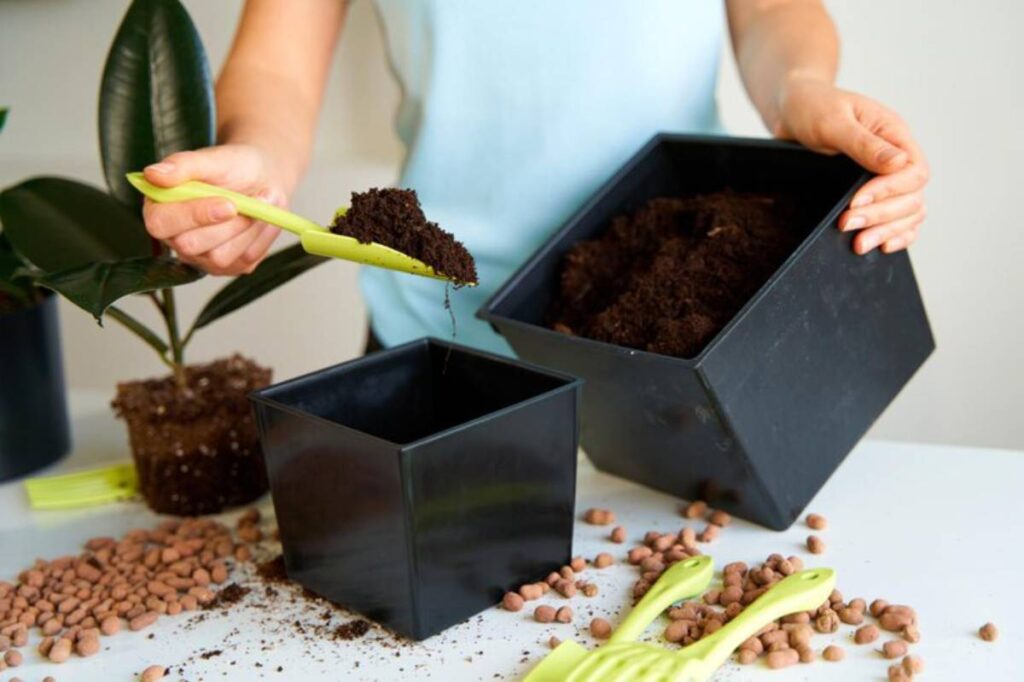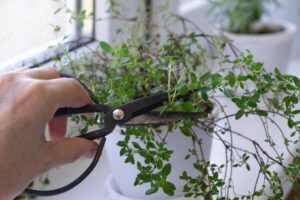The Interior Blog

Choosing the Right Soil and Planter Combo for Style
Ever bought a beautiful plant, placed it in a trendy pot, only to watch it wilt and struggle? You’re not alone. While styling houseplants is a joy, there’s a hidden hero behind every thriving indoor plant — the right soil and planter combo.
It’s easy to focus on how a pot looks on your shelf, but ignoring what’s inside can lead to unhappy roots, poor drainage, and unnecessary stress (for both you and the plant). The soil you choose affects water retention, airflow, and nutrients — all vital for long-term plant health. Meanwhile, the planter defines not only your décor but also functionality, from drainage holes to material breathability.
In this guide, we’ll break down how to match the best indoor plant soil with the most aesthetic plant pots. Whether you’re styling a minimalist living room or a boho-inspired nook, you’ll learn how to combine style with substance, keeping your plants as healthy as they are beautiful.
Why soil matters more than you think
Soil is more than just “dirt”
Indoor plant soil is specially formulated for container life. Outdoor garden soil may seem similar, but it often compacts indoors, suffocating roots and harbouring pests.
A good indoor plant soil should:
- Drain well to prevent root rot
- Retain moisture without staying soggy
- Allow airflow to keep the roots oxygenated
- Provide nutrients essential for plant health
Different plant types have very different needs, so a one-size-fits-all mix usually won’t do.
The best indoor plant soil by plant type
Let’s break down which soils work best for your most common houseplants.
1. Tropical foliage plants (e.g. Monstera, Philodendron)
Ideal soil: A well-draining mix with good aeration. Use indoor potting soil with added perlite and bark.
Why it works: These plants enjoy steady moisture but hate soggy roots.
2. Succulents and cacti
Ideal soil: A gritty mix with sand, perlite, and small rocks.
Why it works: These desert plants store water in their leaves and prefer dry conditions. Fast drainage is essential.
3. Orchids

Ideal soil: Orchid bark or specialised orchid mix with large chunks and no soil.
Why it works: Orchids are epiphytes — they grow on trees, not in soil. Air around their roots is vital.
4. Ferns and calatheas
Ideal soil: Moisture-retentive soil with coco coir and peat moss.
Why it works: These plants enjoy humid conditions and consistent moisture.
5. General houseplants (e.g. pothos, peace lily)
Ideal soil: All-purpose indoor mix, enhanced with a little compost for nutrients.
Why it works: These adaptable plants are forgiving but still benefit from balance in drainage and nutrition.
Understanding soil components: what’s in the bag?
Soil mixes often include various ingredients to tailor performance. Knowing what’s in your mix helps you customise when needed.
- Peat moss/coco coir: Retains moisture
- Perlite: Adds aeration and improves drainage
- Vermiculite: Retains water and nutrients
- Compost/worm castings: Nutrient-rich for healthy growth
- Pumice/sand/grit: Encourages quick drainage (ideal for succulents)
You can buy pre-mixed soil or DIY your own for more control. Just ensure you know your plant’s preferences before mixing.
Planters 101: form meets function
Not all pots are created equal
The pot you choose doesn’t just sit pretty — it directly affects root health. Here’s what to consider:
1. Drainage holes are non-negotiable
Without proper drainage, water pools at the bottom, leading to root rot. Always choose pots with at least one hole.
No hole? Use a plastic nursery pot inside the decorative one, known as “double potting”.
2. Pot material matters
| Material | Pros | Cons |
| Terracotta | Breathable, prevents overwatering | Dries quickly, may need frequent watering |
| Ceramic (glazed) | Stylish, holds moisture well | Can retain too much moisture |
| Plastic | Lightweight, affordable, and retains moisture | Less breathable, may overheat near windows |
| Concrete | Durable, modern look | Very heavy, not ideal for all spaces |
| Woven baskets | Great for boho styling, decorative | Often used as covers, not primary pots |
Choosing a planter that matches your plant’s lifestyle
The aesthetic is important, but so is function. Here’s how to strike the right balance:
Tall plants

Use deep, sturdy pots with a wide base for stability. Ideal for fiddle leaf figs, rubber plants, and palms.
Trailing plants
Go for hanging planters, macrame holders, or elevated stands. Works beautifully with pothos, string of pearls, or philodendrons.
Small, slow growers
Opt for shallow, wide pots to avoid waterlogging. Perfect for succulents and cacti.
Moisture lovers
Choose ceramic or plastic pots that retain moisture. Ideal for ferns and calatheas.
Matching pot style to home décor
Let’s talk styling. You want your pots to complement your interiors without compromising plant health.
For minimal or modern homes:
- Matte black, white, or grey ceramic planters
- Geometric shapes
- Sleek metal stands
For boho or rustic homes:
- Woven baskets (used as cachepots)
- Terracotta or clay
- Patterned, hand-painted planters
For industrial or urban chic spaces:
- Concrete or metal pots
- Dark colours and raw textures
For colourful or eclectic styles:
- Mix-and-match vibrant ceramic pots
- Glazed finishes and bold shapes
Keep the plant’s size and foliage colour in mind when selecting pot colours — dark green leaves pop in light pots and vice versa.
How to pot your plants

1. Choose the right pot size
The pot should be 2–5 cm larger in diameter than the plant’s root ball. Too big, and the soil may stay wet too long.
2. Add a base layer for drainage
Use broken terracotta pieces, pebbles, or activated charcoal. This prevents roots from sitting in water.
3. Fill halfway with the right soil
Add your customised or pre-mixed soil based on plant type.
4. Place the plant and backfill
Centre your plant, then fill around it with soil, pressing gently to remove air pockets.
5. Water thoroughly
Let water run through the drainage holes. If it doesn’t, your soil might be too compact — loosen it slightly.
Signs your soil or planter might be wrong
Is your plant unhappy despite the right light and care? Your soil or pot could be the issue.
Watch for:
- Wilting despite moist soil
- Brown, crispy leaf edges (over- or underwatering)
- Mushy stems or foul smell (root rot)
- White crust on the soil surface (salt build-up)
- Stunted growth
If you notice these signs, consider repotting using a better-suited soil and planter combo.
For guidance on making a smooth transition, see our tutorial on how to repot indoor plants without making a mess.
Do stylish pots mean sacrificing function? Absolutely not
With today’s options, you can easily combine aesthetic plant pots with the best functionality. Many ceramic or woven pots are designed as covers, allowing you to hide a basic plastic pot inside while maintaining healthy drainage.
This “pot-in-pot” method:
- Preserves your plant’s root system
- Prevents water damage to shelves or furniture
- Makes repotting easier
You can enjoy Instagram-worthy displays without risking your plant’s health.
Want inspiration on how to elevate your plant game through décor? Explore our ideas on layering heights to create visual balance with plants.
Conclusion: create harmony between soil, pot, and style
Your indoor plants aren’t just décor — they’re living beings that thrive when their roots are happy. By combining the right soil for nutrition and drainage with a functional yet stylish planter, you lay the foundation for vibrant, lasting greenery in your home.
Think of your plant’s pot and soil like the frame and canvas of a painting. Get both right, and you elevate the entire space. Whether you’re starting your first mini indoor jungle or perfecting a carefully curated shelfie, remember: the most stylish setups always begin from the ground up.
Ready to refresh your houseplants’ homes? Start by inspecting your current pots and soil, and plan one stylish, functional upgrade this week. Let us know in the comments what soil and planter combos have worked best for you — we’d love to see your plant style in action.









